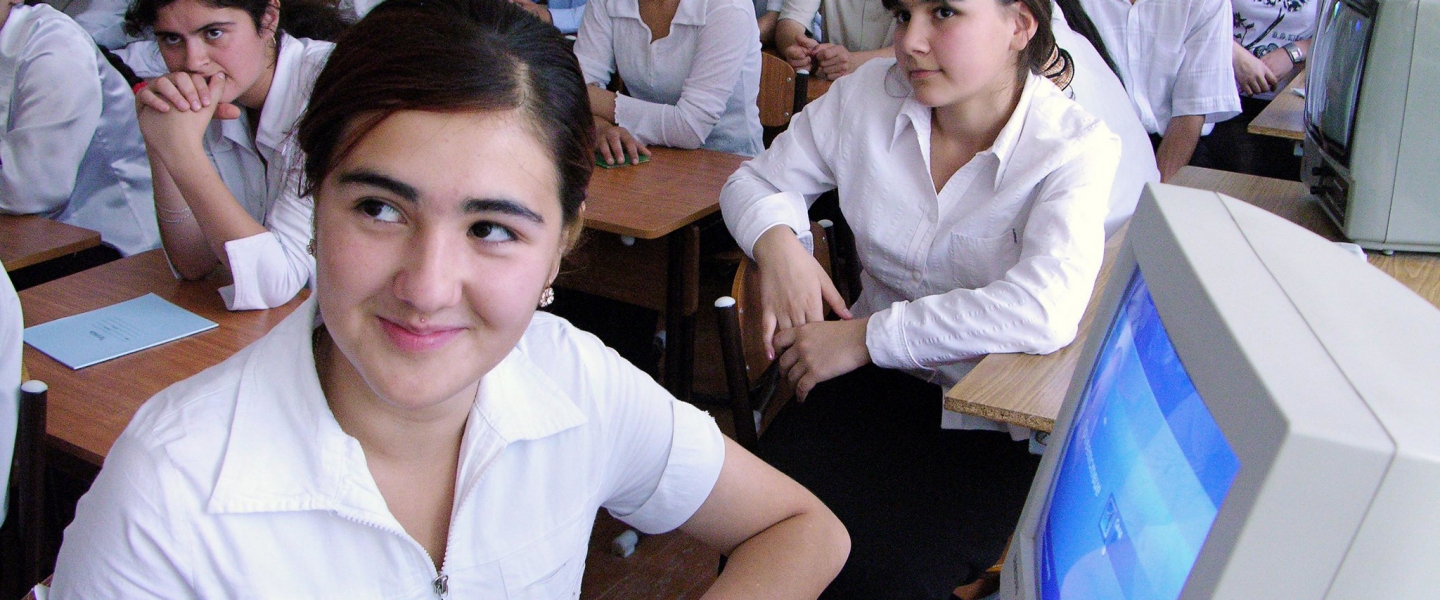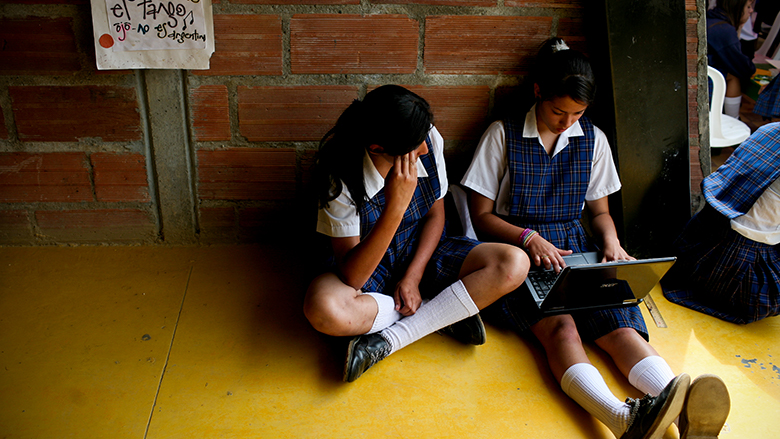The World Bank Group is the largest financier of education in the developing world, working on education programs in more than 80 countries to provide quality education and lifelong learning opportunities for all.
The WBG works in partnership with governments and organizations worldwide to support innovative projects, timely research, and knowledge sharing activities about the effective and appropriate use of information and communication technologies (ICTs) in education systems -- "EdTech" -- to strengthen learning and contribute to poverty reduction around the world, as part of its larger work related to education.
The World Bank estimated the levels of “Learning Poverty” across the globe by measuring the number of 10-year old children who cannot read and understand a simple story by the end of primary school. In low- and middle-income countries “learning poverty” stands at 53%, while for the poorest countries, this is 80% on average. With the spread of the Coronavirus disease (COVID-19), 180+ countries mandated temporary school closures, leaving ~1.6 billion children and youth out of school at its height and affecting approximately 85% of children world-wide. While most countries are working towards re-opening schools, there are still intermittent closures and use of hybrid learning.
Reflecting on COVID Response and Remote Learning
Technology played and continues to play an essential role to deliver education to the students outside of school. Commendably, all countries were able to deploy remote learning technologies using a combination of TV, Radio, Online and Mobile Platforms. However, many children in low income countries did not participate in remote learning with about a third of low income countries reporting that 50% of children had not been reached in a joint UNESCO-UNICEF-World Bank survey. The pandemic has also led to significant losses in learning. School closures and limited access to remote learning means that Learning Poverty is likely to worsen from 53% to 63% especially in low-income countries if no remediation interventions are taken.
The crisis has starkly highlighted the inequalities in digital access and that ‘business as usual’ will not work for delivery of education to all children. To close the digital divides in Education and leverage the power of technology to accelerate learning, reduce learning poverty, and support skills development a focus must be placed in bridging the gaps in: i) digital infrastructure (connectivity, devices and software); ii) human infrastructure (teacher capacity, student skills and parental support); and iii) logistical and administrative systems to deploy and maintain tech architecture.
Education systems must adapt. It is against this backdrop that the EdTech team at the World Bank has identified five key questions to address in the short to medium term. These questions touch on the need to re-imagine education, to provide an equitable, engaging and fun learning experience for all children.
How can countries leverage EdTech investments to develop resilient hybrid learning systems? This question requires both reflecting on the lessons from implementation of remote learning during COVID and addressing the new digital infrastructure access divide. The World Bank is working with countries to identify how to address issues of affordable connectivity, device procurement, cloud solutions and multi-modal delivery of education. Moreover, the investments that countries have made in remote learning could be leveraged address existing challenges in education. Many countries are now thinking about a dual role for remote learning: as an insurance policy against future calamites especially in a world experiencing climate change as well as a way to reach out of school children and provide a lifelong education to all citizens.
How can countries recover learning loss, more effectively harness data and personalize learning with technology? The World Bank is deepening its work on adaptive learning systems, remote assessment and how education systems can more effectively use learning analytics to personalize education. A major part of this work will be developing a new strategy for Education Management Information Systems (EMIS 2.0) to support more effective use of data.
What are the changing roles and new skills for teachers in hybrid learning systems and how can additional human connections be leveraged through technology? The World Bank is exploring teacher competency frameworks, teacher networks, and communities of innovative teachers to support countries to empower teachers. Teachers are still central to learning even, or rather, especially in an environment rich with technology. Evidence is growing that bypassing Teachers and not engaging them with technology does not lead to student learning improvement.
How can countries leverage open technology ecosystems to expand access to quality content and learning experiences? The World Bank will collaborate with partners developing open global public goods and strategies to engage the large ecosystem of innovators in client countries to support the design and development of new educational content and curriculum. The team will develop communities of practice around EdTech innovation hubs and creative talent to develop new open educational libraries. A key content area of focus will be climate change.
How can technology support the development, measurement and accreditation of future skills? The World Bank will support countries to define 21st century competencies in students and teachers; explore ways to more effectively measure these skills and accredit these skills in collaboration with external partners sharing knowledge and experience in communities of practice on hard to measure skills and blockchain for education.
Education technology by itself is not a panacea
Though investment in EdTech has been increasing, learning and outcomes as a result have not changed considerably in many countries. An OECD report found that, when it comes to impact of computer usage in schools as measured through PISA, “impact on student performance is mixed, at best." COVID however has changed the debate on EdTech from a question of if to a question of how. Experience to date highlights that teaching and learning remotely is not the same as face-to-face pedagogy. Many teachers with access to e-content, for instance, use it like any another textbook to read from in class. Some adjustments include shorter and more modular content, more engaging content such as edutainment, continuous feedback, smaller group on-line discussions on more open-ended questions. Education at its heart is about human connections and relationships. While we can never replace the magic that happens between great teachers and students in an in-person environment, we should focus on the social aspects of technology to enhance connections from a distance. Much more attention must be directed on how technology will enhance teaching and learning in a blended learning environment reaching students, both in school and at home.












